






Release time:2024-08-21 Browsed0 order
In the era of the IOT with the rapid development of wireless communication technology, information exchange and communication between people and things, and between things and things, is truly realized.
We only need to install the supporting apps of various smart terminal products (smart sockets, smart light controls) on our smartphones, and we can use the touch screen to control the functions of various smart home products with built-in wireless modules.
This article briefly introduces the selection and application of wireless modules, WiFi modules, and WiFi+Bluetooth two-in-one combination modules behind smart control.
The WiFi module belongs to the physical network transmission layer and has a built-in wireless network protocol IEEE802.11b.gn protocol stack and TCP/IP protocol stack.
The serial port or TTL level is the WiFi wireless network communication standard. Many traditional devices that can be connected to the network are embedded in embedded modules with intelligent genes.
WIFI smart home system is a smart home control system product with built-in WIFI module. This kind of product has WIFI wireless control function, relatively simple structure and easy to use.
1. LAN control
Method 1
The wifi module works in AP mode, and the smart terminal (mobile phone, tablet computer) directly accesses the network provided by the wifi module to achieve wireless control in the same hotspot network.
However, in the AP mode (i.e. hotspot mode) where the wifi module works, the side that can access the smart device is limited. Therefore, the wifi module uses the other 6 smart control sides (such as mobile phones and tablets).

Method 2
The wifi module runs in STA mode, the smart terminal and wifi module run in the wireless network environment provided by the wireless router, and the data signal is transmitted through the wireless router to realize LAN wireless control.
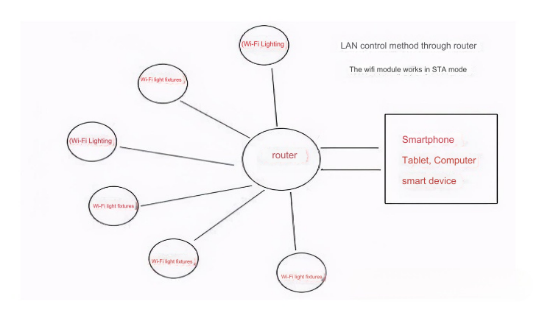
Method 3
Use the STA mode of the wifi module as the central controller. The wireless communication between the wifi central controller and other device terminals can use 433 technology, 315 technology, and 2.4G technology to form a wifi central controller LAN.
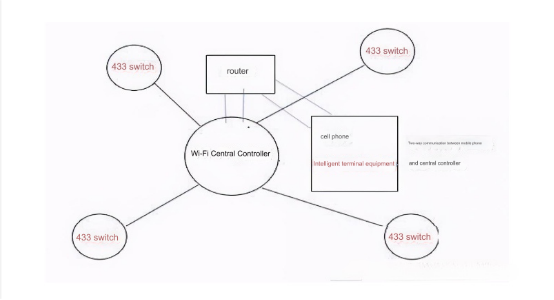
Remark:
433 wireless technology is a wireless unidirectional technology with advantages and relatively long transmission distance. 433 technology is used for communication between Wifi controller and 433 switch. The wifi module is in STA mode at this time.
Tips:
2.4G technology is a two-line wireless technology with a relatively short transmission distance. The communication between the Wifi controller and the 2.4G switch uses 2.4G technology, and the Wifi module is in STA mode at this time.
Use simple wifi technology and use a wireless router as the central control center. At this time, the wifi module works in STA mode. The MAC address of the wifi module is bound to the service, and the data of the wifi module is sent through the router. It forms a network with the mobile phone's 2G, 3G, 4G or other wifi network to achieve control.
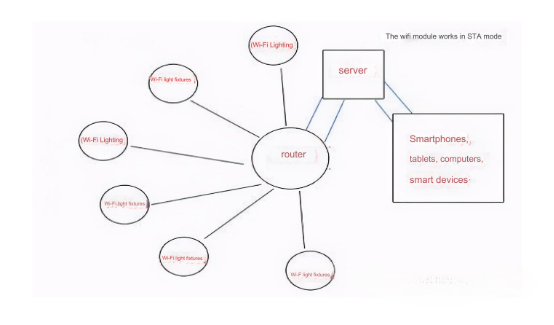
Method 1
WAN wifi remote control (Figure 4) The router constitutes the central control, while the WAN control is formed in the wifi mode public group STA mode.
Combine wifi technology with other technologies (such as wifi with 2.4G, wifi with 433 technology). At this time, the wifi module works in STA mode, and the mobile phone's 2G, 3G, 4G or other wifi network constitutes the control network.
(Figue of a combination of wifi and 433 technology)
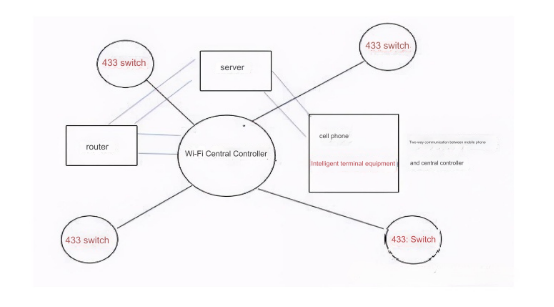
Method 2
The wifi module is used as a central controller and is used in conjunction with 433 wireless technology to form a wide area network schematic.
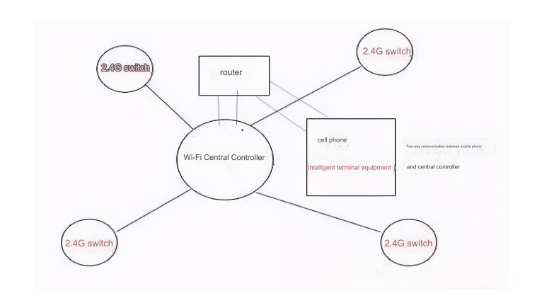
The wifi module is used as a central controller and combined with 2.4G wireless technology to form a wide area network control diagram. This is how the WiFi module is used to achieve intelligent control in the wide area network.
The smart home system based on WiFi technology consists of WiFi intelligent nodes, smart home gateways, wireless routers, remote servers, control terminals, 4G communication networks and the Internet.
WIFI is very common in our daily life, but it does not cover all markets of smart home systems. Nowadays, many smart home products use technologies such as ZigBee and WIFI.